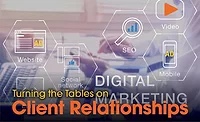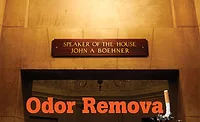Leveraging LinkedIn to Attract New Property Restoration Customers

Photo credit: filadendron/ E+ via Getty Images
The world of social media marketing is constantly changing, so what might be effective today may not be effective tomorrow or in the near future.
However, one way to stay ahead of the game is to narrow your social media presence. I know that is the opposite of what some social media experts recommend.
They often suggest being on as many platforms as possible.
But remember this: Whether it is home decorating or social media marketing, less is more. If you fine-tune your social media marketing, focusing on just one or two key platforms, you are more likely to get more mileage — and more sales — than beating every bush and connecting to every social media platform available.
So, which platform — Facebook, Instagram, LinkedIn, TikTock, YouTube or Twitter — should you select? If most of your work is residential and homeowners most frequently call you in, the sites that might serve you best are Facebook, Instagram and, if you have videos, YouTube.
As most social media experts will tell you, videos can be very compelling and lead to sales, but, remember to keep them short. After one to three minutes, sometimes less, the viewer’s likelihood of moving on is very high.
However, if most of your clients are building owners of either commercial or large residential complexes, your best social media bet may be LinkedIn. But the key to making LinkedIn work requires training and some patience.
Cold Calling to Connecting
In the old days — anytime before 2003 — most salespeople representing a restoration and remediation or other service company would make sales calls to drum up business. These would either be by physically knocking on doors, trying to meet decision makers in person or on the telephone. Both were a bit intimidating, but it was how sales, especially in the service industry, were handled.
In 2003, LinkedIn was introduced, and salespeople quickly found this to be a far easier and less intimidating way to prospect and reach decision makers. Not only that, as more people joined LinkedIn — today, an estimated 800 million people are on LinkedIn — its value for connecting with decision makers and increasing sales grew exponentially.
Today in North America, most all salespeople are putting LinkedIn to work in one way or another. It has become a sales and marketing resource tool gold mine. That is if used correctly.
And what do we mean by “if used correctly”?
Have you ever been asked to connect with someone on LinkedIn and very shortly afterward receive a “cut and paste” sales message? It happens all the time.
These salespeople are not interested in connecting with you; they are interested in selling you something. In the LinkedIn world, it is considered spam; it turns people off, and they may even disconnect with you.
Writing Sincere Templates
How can we prospect on LinkedIn and make more sincere connections with LinkedIn members whom we would like to become our customers? One approach not to use are automated systems that send out connection messages every day. Yes, they save a lot of time, but they are used by so many salespeople today, LinkedIn members are starting to recognize these auto-messages as spam and shying away from them.
Instead, here is the approach I recommend to my clients:
- First, do searches for, as an example, property owners. LinkedIn provides filters so you can narrow your selection by geography, title, company size and more.
- Narrow your selection to about 500 people. That is manageable, and the system will allow you to create a list of these people.
- Now comes the most essential part. Review each profile before sending out a connection message. It only takes a couple of minutes.
- Look for something on their profile to comment on. If they have recently authored an article or posted something on LinkedIn, mention this in your connection message. For instance:
Hello Amy,
I just read your article on running a multi-tenant office building and found the part about building safety incredibly informative. I would like to connect with you.
Warm regards,
Robert
Amy sees you have taken the time to learn a bit more about her and even read her article. She also knows you are not a LinkedIn “bot,” sending out connection messages to anyone and everyone. Amy is very likely to take the next step and connect with you.
But what if Amy does not have any articles or posts on LinkedIn, and is still someone you want to connect with? In this case, a short but sweet message like the following may be your best option:
Hello Amy,
I’d like to connect.
Warm regards,
Robert
The Follow-Up Template
Let’s say we have connected with 500 people. Now we take the next step, turning LinkedIn into a powerful marketing tool. But first, once again, what not to do:
- It is worth repeating, do not send a sales pitch.
- Do not ask to set up a call and send them a calendar link; a bit pushy, don’t you think?
- Do not send them a long message talking about yourself and your company.
Regarding what to do, it must be said that no one follow-up message will work in all cases. But what you want is a conversation opener. You might consider the following:
Hello Amy,
Thank you for connecting. I’m with Servicefast, one of the largest restoration and remediation companies in the state. I’m just wondering if you have someone to call if your facility experienced water or fire damage and needed cleaning, restoration, and remediation immediately?
Kind regards,
Robert
This is a very simple message. You may think it is a very underwhelming message. But it is very likely that Amy has never even considered what to do or whom to call should a catastrophe happen in her building.
Don’t be surprised if you get a return message like the following:
Hello Robert,
Thank you for your message. It’s not something I have looked into before, but now, after connecting with you, I realize I should. Could you please send me some information about your company? Below is my email address.
Best,
Amy
The Keep-in-Touch
Your job now is to keep in touch. If you have good writing skills, occasionally sending an email newsletter or personal message to all of your LinkedIn connections is one way. LinkedIn is even unrolling a newsletter service just for this purpose.
However, if you do not have good writing skills or the time to write, look for information of value to share with your connections. For instance, here is one pulled from RandRmagonline.com, which could work well:
Hello Amy,
I just saw this article about how to read Safety Data Sheets (SDS). As a building owner and manager, I’m sure you know how important these are, but they are often so hard to understand. This article simplifies things. It might be something you want to print out and hold on to. Here’s the link:
Very best,
Robert
You will have to find more ways to keep in touch with your connections. Every few months is fine.
Here’s the bottom-line.
Ever hear the expression, “Who ya gonna call?” It was made famous in a Ghostbusters movie. As it applies to you and LinkedIn, you want to make it your goal that the answer to that question is you; you are the one they call when an emergency happens in their building.
Looking for a reprint of this article?
From high-res PDFs to custom plaques, order your copy today!








